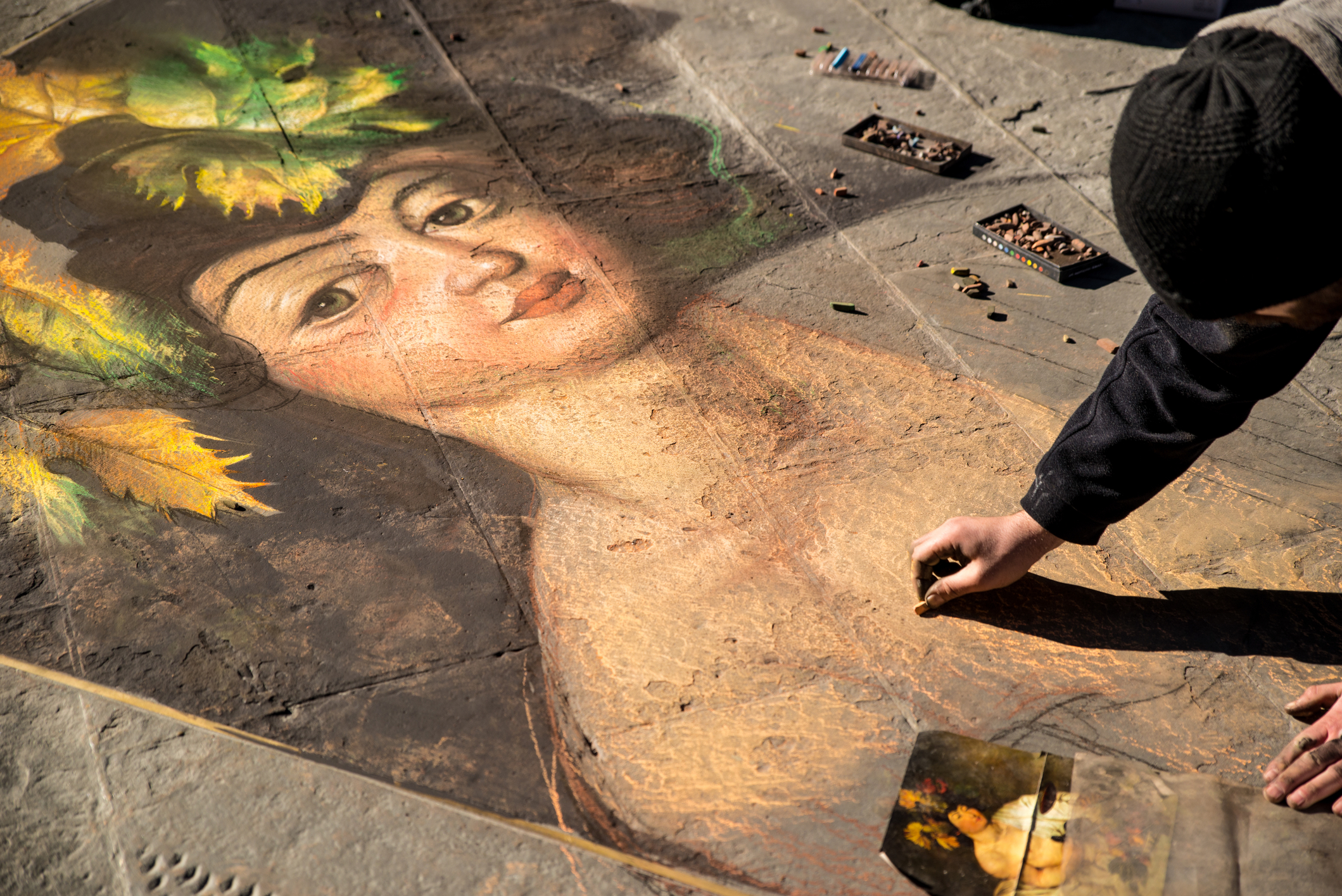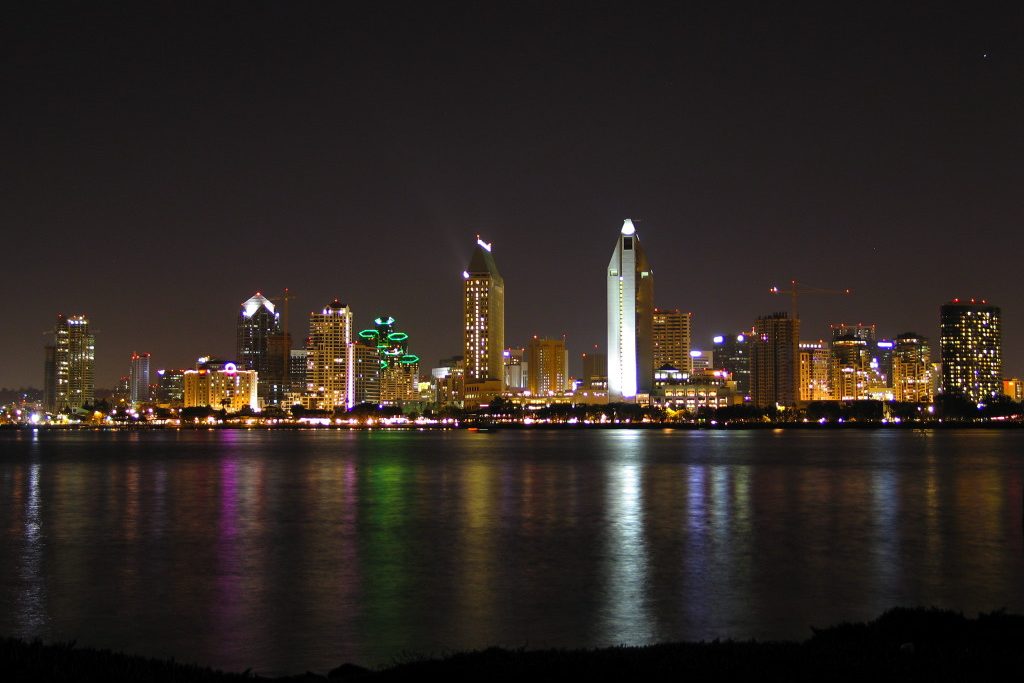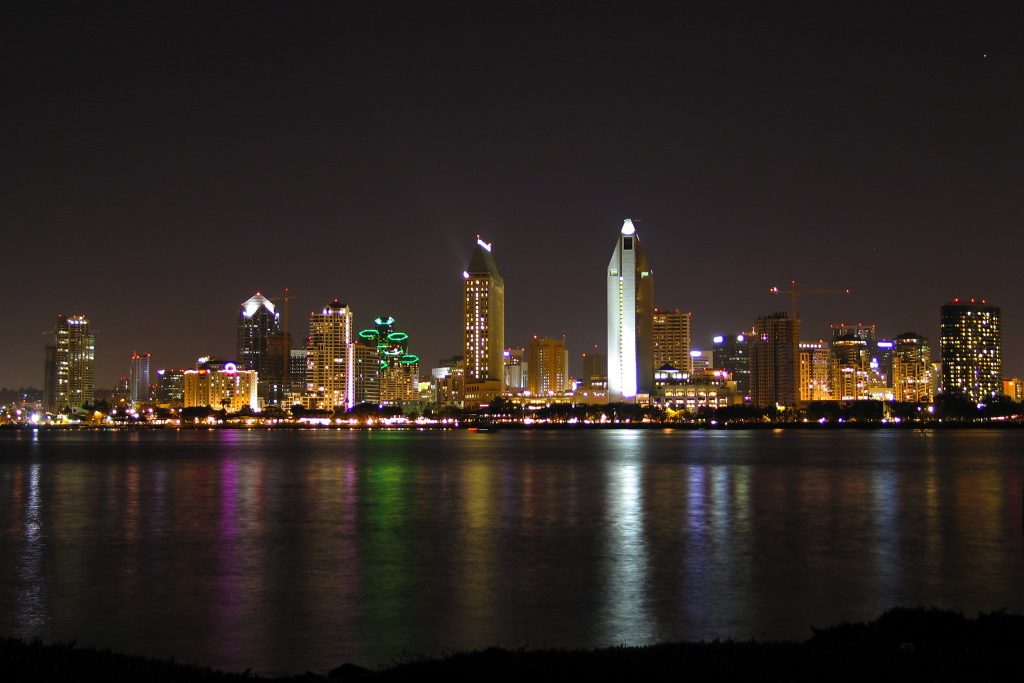The extent of my chalk paintings date back to hot, sunny childhood days when my mother would unearth the sidewalk chalk from the garage and let me have the run of the sidewalk in front of our house. By the end of the day, the hot pavement would be covered with different flowers, a stick figure rendition of my family – complete with our house in the background – and, if I was feeling really artistic, a hopscotch layout using every color I had.
Sidewalk or street chalk art dates much farther back than my childhood (I won’t say how long ago that was), however, and, in the Italian culture, has a very rich and respected history behind it. It originated in 16th century Italy, when artists would roam from city to city, using simple materials like chalk, charcoal, brick and other colored stones to draw their artwork on piazza floors or hard-beaten earth.
Because their work often depicted the Madonna and child, the artists were eventually dubbed “Madonnari” and oftentimes they lived entirely off of the coins that passing admirers would toss in their caps while they worked. Though this art form – rich with Italian religious and cultural history – began dying away following World War II, it has enjoyed a resurgence around the world and modern-day Madonnaris are back in action.
Street art festivals are emerging on a national – and global – scale, allowing artists to continue a time-honored Italian tradition and giving the public a chance to appreciate a unique form of art that is temporary yet beautiful. The I Madonnari Festival in Santa Barbara became the first festival of its kind in California, launching in 1987. Since then, similar festivals have popped up throughout the state from Santa Monica to San Rafael to Pasadena and, of course, San Diego.
San Diego artist Lori Escalera is one of these modern-day Madonnaris. An artist in her own right, she has participated in San Diego’s annual Sicilian Festival as a street painter for the last four years. Despite the harsh working conditions – these festivals are typically held during the summer and fall to avoid a street artist’s worst nightmare: rain – Escalera says her days spent street painting are “single days I live, breathe, talk and perform art without a care to any other part of living.
Street painting, to me, must be like water to a fish. I immerse myself in the art and breathe it to life. Most other artistic experiences require a measure of pressure: either to perform for a client, or constant critical questioning of my skills as an artist. But to get out of that stress for a weekend and enjoy the art process – with no hesitations – is genuinely gratifying.”
Escalera notes that street art is sometimes viewed by the public with some disappointment because it is temporary. “I always compare what we do to going to see the theater or an opera,” she said. “Long after the day has passed, the viewer has a sense of the Street Painting that occurred, either by personal memory or a photo he may have captured. This is the reality that exists for everyone – equally.”






























